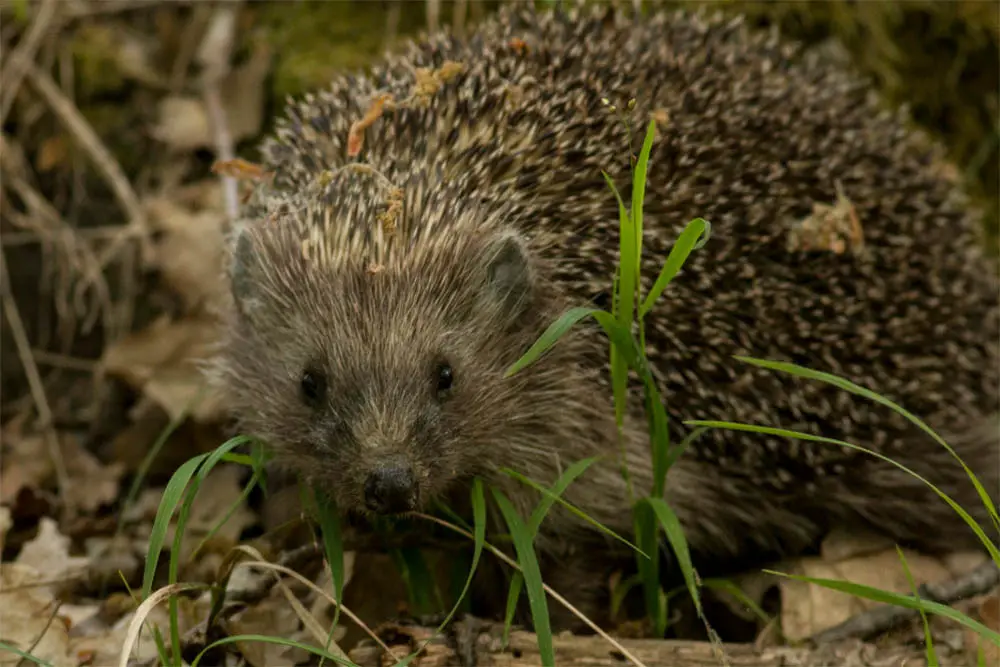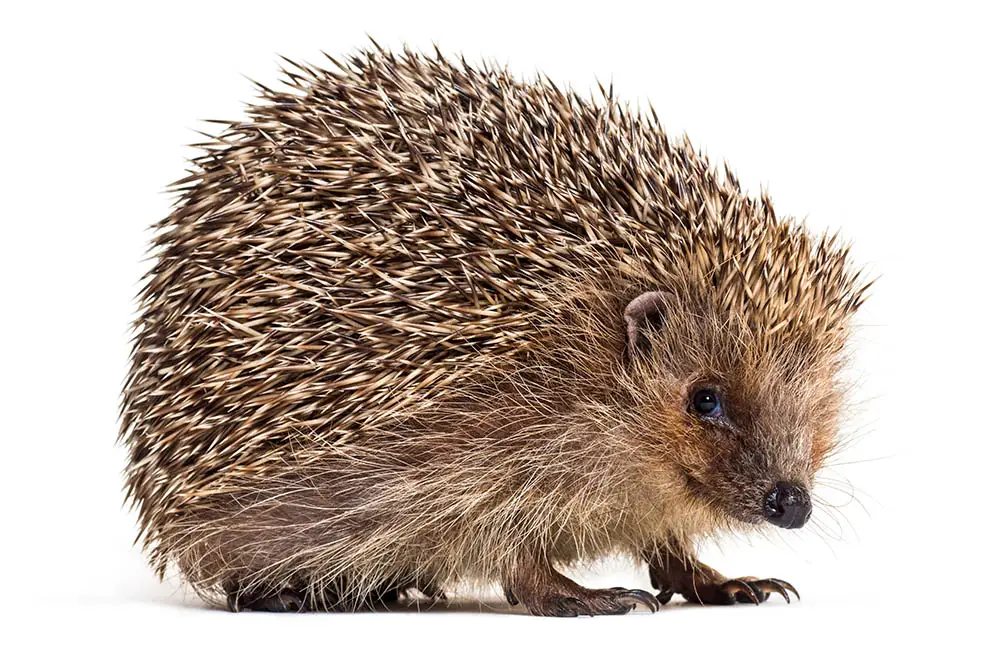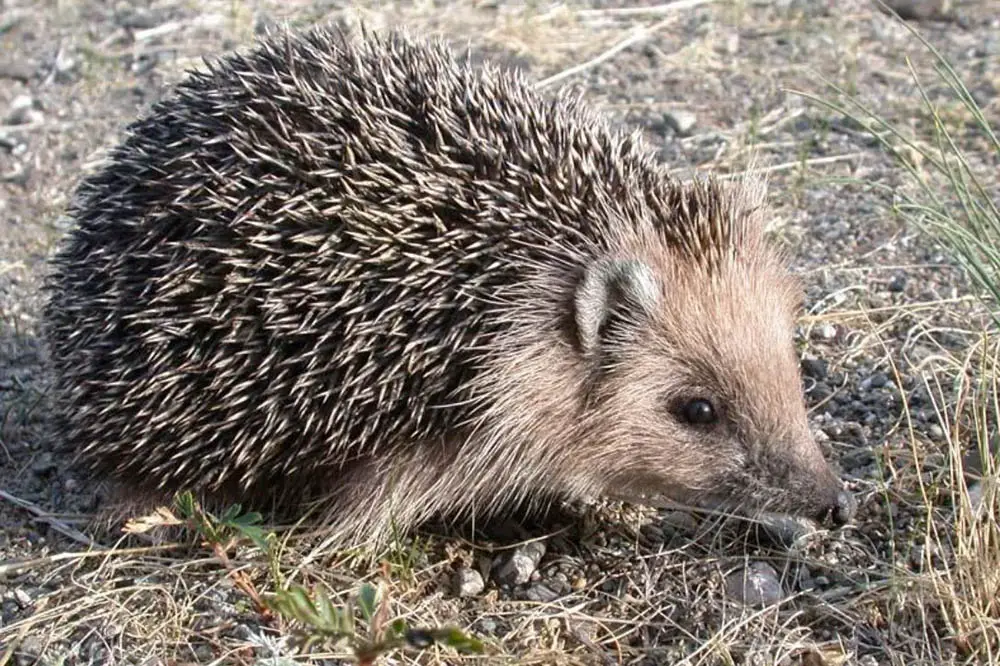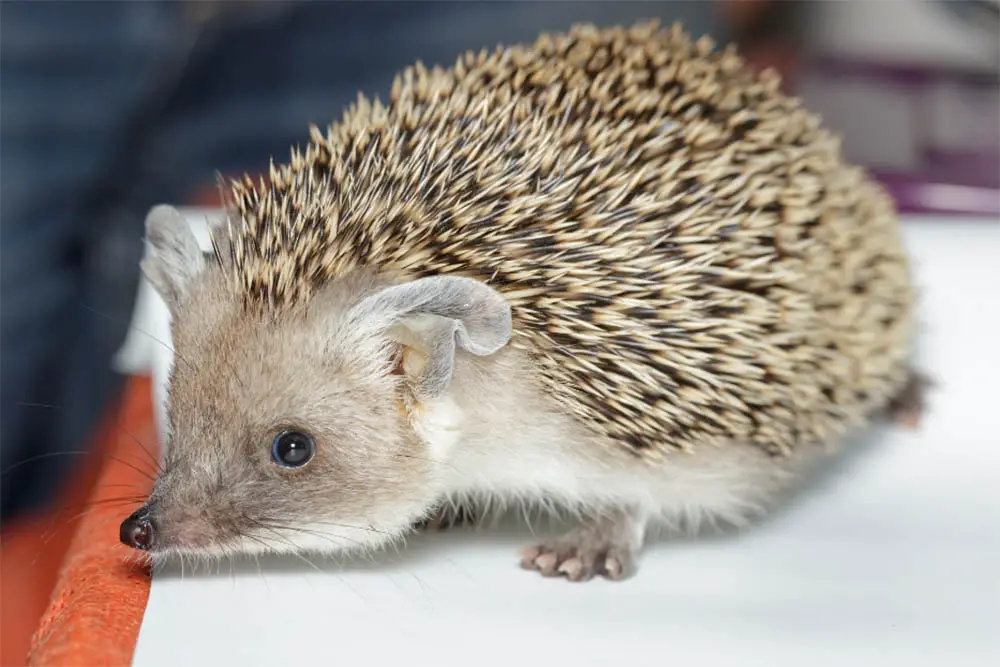In layman’s terms, the southern white-breasted hedgehog is fairly similar to its cousin, the European hedgehog. The only difference is that, as the name suggests, southern white-breasted hedgehogs feature a distinctive white patch on their bellies.
Surely there’s more to southern white-breasted hedgehogs than that, right?
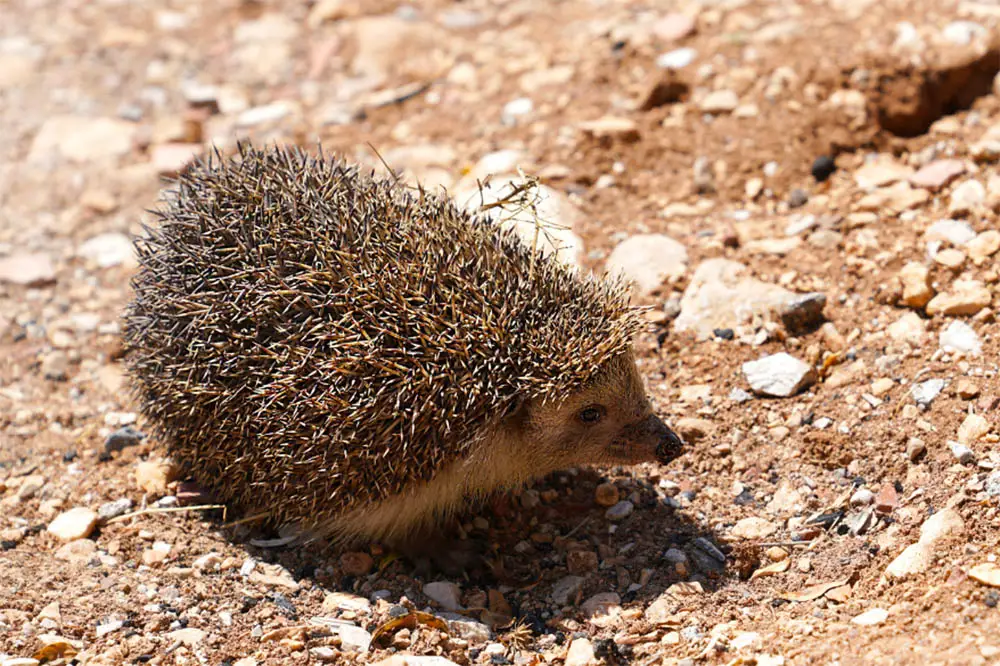
Whether you’re wondering whether you can own one as a pet or if you’re merely curious about different hedgehog species, you’re in luck! Here is the ultimate guide to the southern white-breasted hedgehog.
Southern white-breasted hedgehog history
There isn’t a clear history specifically about southern white-breasted hedgehogs, but as they are so closely related to the European hedgehog, their histories are near enough the same.
The difference between the two (other than the white belly) is that southern white-breasted hedgehogs are native to Eastern Europe and Southwestern Asia, whereas the European hedgehog is only native to Western Europe.
Hedgehogs across Europe are widely distributed and commonly found in rural areas. Southern white-breasted hedgehogs are native to Eastern Europe, the Middle East, and Southwestern Asia.
Interestingly, both southern white-breasted hedgehogs and European hedgehogs are commonly found in New Zealand. During the 1860s and 1890s, colonists from England brought over hedgehog species to New Zealand for the purpose of pest control. Unfortunately, not many survived the 50-100 day long trip.
Those who did survive found their new homes on the South Island, and hedgehogs were later introduced to the North Island in the 1890s.
While hedgehogs were considered a great pest control for slugs and snails that destroyed gardens and food, New Zealanders didn’t appreciate them at first. Their diet was the same as game birds and native animals, which meant that the number of native animals in the wild was beginning to decline.
Nowadays, there’s a bit of a debate about hedgehogs in New Zealand. On the one hand, hedgehogs are harmless to humans and work to keep food and crops clean from slugs and snails.
On the other hand, conservationists are concerned about how hedgehogs will eat anything from lizards to native ground-nesting birds, contributing to declining numbers.
Where do southern white-breasted hedgehogs live?
Southern white-breasted hedgehogs are native to the Middle East and Southwestern Asia.
This includes countries like parts of Russia, Iran, and Turkey. These hedgehogs shouldn’t (but often) get confused with the northern white-breasted hedgehog, which is native to Eastern Europe and Russia including Poland and Yugoslavia.
Hedgehogs in general don’t like cold or wet environments as it confuses their natural cycle of hibernation. When they feel the cold in months that shouldn’t be cold in relation to their natural cycle, they will begin to hibernate at the wrong time.
This is why countries in the Middle East and Southwestern Asia are an ideal climate for southern white-breasted hedgehogs – because the seasons and temperatures are almost completely predictable.
Southern white-breasted hedgehog appearance
These hedgehogs are often aptly named “white-bellied hedgehogs” or “white-chested hedgehogs” for their distinctive white patch on their chest. This white patch stands out in contrast to the hedgehog’s brown skin.
While the skin of a hedgehog is usually brown, the spiny coating is filled with 5,000-6,000 spines ranging from brown to black to white. This is what gives most hedgehogs that light brown coloring.
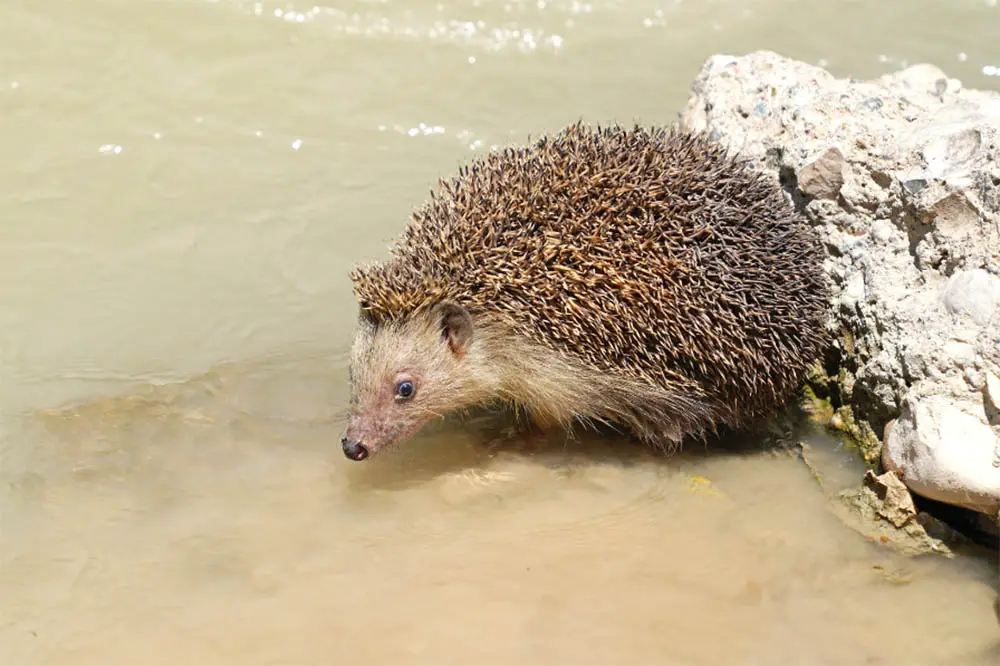
In terms of size, southern white-breasted hedgehogs can grow up to 10” long (head to body) when they are fully grown. Their little tails only amount to just over one inch long, and they only weigh around 2.5 lbs.
All hedgehogs have the unique ability to curl into a ball. This usually occurs when the hedgehog is sleeping or if something has startled it. Their spiny outer layer works as a shield against predators including snakes and foxes.
When they hibernate and the risk of predation is higher, their spiny coat can be the difference between life and death.
Can I keep a southern white-breasted hedgehog as a pet?
If you’re completely enamored by the appearance of southern white-breasted hedgehogs (we get it, they’re adorable), you might want to reconsider owning one as a pet.
While they’re not exactly the most dangerous animal to own, the state you live in might have strict laws about owning a hedgehog.
Truth is, it is illegal to own a hedgehog in several states of North America. This is because hedgehogs aren’t native to America, and if their needs aren’t met in terms of temperature and seasons to suit their hibernation period, it can disrupt their natural cycle.
Plus, if a hedgehog escapes, it has the potential to disrupt an entire eco-system. It might sound a bit dramatic, because what harm could a single hedgehog do, but eco-systems are so intricately designed that even the smallest change can be disastrous.
Furthermore, hedgehogs can be carriers of diseases like foot-and-mouth disease or rabies. While cases of these diseases are rare in hedgehogs, it’s still a risk that certain states don’t want to take for the sake of their local wildlife.
It is currently illegal to own a hedgehog as a pet in these states:
- California
- Hawaii
- New York City
- Omaha, Nebraska
- Georgia
- Fairfax County, Virginia
- Arizona
- Pennsylvania
Other countries like Austria, Spain, and Finland also have strict laws on owning hedgehogs. African Pygmy hedgehogs can legally be kept as pets, but it is illegal to own a southern white-breasted hedgehog as this species is protected.
However, some states have loopholes that means you can legally own a southern white-breasted hedgehog as a pet. In Wyoming, Maine, and New Jersey, for example, you will need to have a permit to own a hedgehog. You will also most likely need a license to breed.
As the laws on owning hedgehogs as pets are so complicated, it is vital that you check with your state’s regulations and with your local authorities to see if you can legally own one. While hedgehogs aren’t a rare species, they are protected across Europe, which means owning a southern white-breasted hedgehog can be deemed unethical.
Southern white-breasted hedgehogs in the wild
Whether you live in a state where owning a hedgehog is illegal or if you’re purely here to learn about this unique species, here is how the southern white-breasted hedgehog lives in the wild!
Lifespan
Southern white-breasted hedgehogs live up to three years on average, though some are reported to live up to ten years. This short lifespan is mostly due to starvation in hibernation, threat from predators, deforestation, and roadkill.
Habitat
Like most hedgehogs, southern white-breasted hedgehogs like to live in dense areas of foliage. As their name suggests, hedgehogs live in hedgerows, woodland areas, and on the periphery of parks or fields.

They’re hardly found in the middle of a woodland area where they could be exposed to predators or the elements – instead, they prefer to reside on the edge.
While other animals like badgers also like to live along hedgerows, hedgehogs are hesitant and scared of badgers, so they don’t tend to coexist in the same areas.
Southwestern white-breasted hedgehogs are most commonly found in rural areas where there is less noise pollution and people. You will often find some in the green areas of cities, too.
As they are nocturnal, southern white-breasted hedgehogs won’t scavenge for food during the day. Instead, they will hide in their nests in daylight, and look for food in gardens and farmland at night.
Interestingly, something that sets European hedgehogs and southwestern white-breasted hedgehogs apart is that the former doesn’t dig dens. Unlike the European hedgehog, southern white-breasted hedgehogs prefer to make grass nests above the ground. The reasons for this are unclear.
Hedgehogs don’t like moist or cold areas. Instead, they prefer dry places to next. They associate the cold with hibernation.
Behavior
All hedgehogs are notoriously shy animals. Southern white-breasted hedgehogs are hesitant and easily startled, which is why they will either roll into a ball or freeze on the spot when they encounter a human or larger animal.
Southern white-breasted hedgehogs aren’t the friendliest of animals towards humans or other animals, regardless of species. Sure, they’re non-aggressive, but there’s hardly ever signs of affection towards lovers or family. They don’t form social interactions unlike badgers or foxes. Instead, they are mostly solitary animals that will only bond with one another during the hibernation and mating seasons.
Hedgehogs aren’t noisy animals, but they will make the occasional grunt or squeal as they make their nests, search for food, or when they mate. They will squeak at a higher pitch when they are baby hoglets. If you captured a wild southern white-breasted hedgehog, they are likely to make some noise in distress.
Diet
Southern white-breasted hedgehogs are omnivorous animals that will eat anything from insects to fruits to mushrooms. They love snails and slugs, which is what makes them so popular in gardens that grow vegetables. Hedgehogs are basically nature’s ethical version of slug repellant.
They will eat just about anything, which means hedgehogs will happily gorge on lizards, ground-nesting birds, slow worms, mice, or frogs if they can get their little paws on one.
Hibernation
Like all hedgehogs, southern white-breasted hedgehogs enter their hibernation period from November to mid-March. Before this time, they will fill their bodies up with fatty foods to help them last through the winter.
Out of the hibernation season, southern white-breasted hedgehogs will make nests of grass and twigs that are semi-permanent. These nests can be flimsy, but they are only there for them to rest during the day for when they rummage for food at night.
The hibernation nest is much denser than the regular nest. They will find a small place underneath logs or fallen branches to make a nest that will protect them from the elements and predators during the dormant months.
They will also roll themselves into a ball as an extra layer of warmth and protection.
Breeding
The breeding season of southern white-breasted hedgehogs is most common between March and July, though some mating is said to occur in September. Most hedgehogs are said to breed once or twice a year.
After six weeks, a hedgehog will produce around four to six hoglets – though some are said to make ten babies. Female hedgehogs have two sets of five nipples, which in theory could feed ten hoglets.
However, hedgehogs only produce enough milk to thoroughly feed around five hoglets before the weaning period, so some hoglets tend to miss out on feeding time and will die from starvation.
When born, the hoglets have a soft layer of spines which double in thickness fairly quickly. They enter the weaning period when they are five weeks old.
Health risks
All hedgehogs are predisposed to certain health risks. They are most commonly associated with fleas – though they aren’t the reason for fleas in dogs, and hedgehog fleas are host-specific.
Hedgehogs are omnivorous and don’t tend to stop eating as they prepare their bodies for hibernation, which means they are prone to obesity, infection, and metabolic bone disease. The latter usually occurs when they don’t receive enough calcium or phosphorus in their diet.
While hedgehogs can carry foot-and-mouth disease and rabies, this is rare. Scientific studies are lacking in whether hedgehogs carry serious diseases.
Southern white-breasted hedgehog care guide
If you live in a state where you can own a hedgehog, make sure you are going to own one for the right reasons.
Hedgehog pets are likely to live far longer than in the wild as they aren’t exposed to risks such as infection, roadkill, or predation. However, if you don’t meet their requirements, their lifespan can be shortened.
Habitat
The most important part of owning a hedgehog as a pet is to replicate their natural habitat as much as possible.
Even if a hedgehog has been bred for selling purposes, they will have a natural cycle that requires hibernation. Their indoor habitat should accommodate for this, so allow them to make nests and hide underneath logs for when they are ready to hibernate.
The problem with owning a hedgehog in America is that certain states can get very, very cold in winter.
While Eastern Europe and Southwestern Asia get cold in the winter for southwestern white-breasted hedgehogs, this is a climate they are used to.
If you live in a state where snow is predictable, you should make sure to keep the temperature and environment from freezing your hedgehog when they hibernate.
Diet
As for their diet, hedgehogs will need food that they would usually find in the wild.
If you want to own a hedgehog for pest control in your garden during summer, then it’s a good idea to let them wander around your yard to eat the slugs and snails – just make sure they can’t find a route to escape!
Otherwise, make sure to feed them a mix of fruits, nuts, mushrooms, and insects like mealworms and crickets. They should also have access to water.
Behavior
Remember, hedgehogs are wild animals that don’t form bonds from social interactions. However, if you raise a hedgehog from when it is a hoglet, it might be more tolerant and less shy of humans.
Still, don’t expect a hedgehog to respond to humans in the same way as a dog, cat, or even a tortoise. They will run and hide when they are startled. While they aren’t aggressive, this isn’t fair to them.
People will often assume that holding a hedgehog will hurt their hands from the spines, but it mostly depends on how you hold the hedgehog and its temperament.
They’re not going to prick up their spines like a porcupine, but that doesn’t mean you won’t accidentally get your finger stabbed by a spine if you hold it incorrectly.
If you have kids, make sure to be there when they are handling the hedgehog because if they get pricked by a spine, they could drop the animal.
Health risks
While hedgehogs in a home won’t catch the same diseases or fleas as one in the wild, there is still a major health risk to be cautious of. All hedgehogs carry the salmonella bacterium.
This is non-harmful to the hedgehogs, but if a human digests this bacterium, they will develop symptoms of vomiting, diarrhea, and fever.
Therefore, you must wash your hands thoroughly after handling a hedgehog or its environment.
Should I get a southern white-breasted hedgehog as a pet?
As cute as they are, it’s not entirely moral or ethical to own a southern white-breasted hedgehog as a pet. It might be more acceptable to rescue a southern white-breasted hedgehog from a family who couldn’t care for the animal, but you should still be an expert in caring for these creatures.
While southern white-breasted hedgehogs aren’t aggressive or necessarily “wild” animals, they’re still not domesticated. Even though they aren’t rare, they are still a protected species across Eastern Europe, the Middle East, and Southwestern Asia.
To buy a southwestern white-breasted hedgehog from a seller is considered immoral, as you are financially contributing to the exotic pet trade. Plus, these animals aren’t native to America, and therefore aren’t meant to live there!

